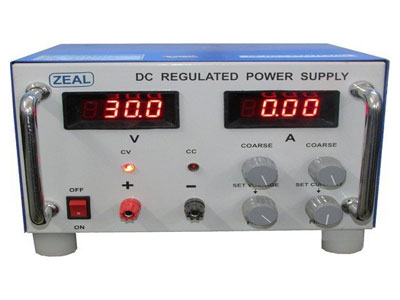Key Takeaway
Ripple in a power supply is the unwanted AC fluctuation in the DC output. When AC components mix with DC current, it’s called current ripple. Similarly, when AC affects DC voltage, it’s known as voltage ripple. These fluctuations occur due to incomplete suppression of the AC waveform after rectification. Ripple can cause noise and instability in electronic circuits, affecting their performance. Minimizing ripple is crucial for maintaining the efficiency and reliability of power supplies in various applications. Understanding and managing ripple ensures smooth and stable DC output, essential for sensitive electronic devices.
Definition and Causes
Ripple in a power supply refers to the small, unwanted residual periodic variation of the DC output voltage within an AC power supply. These fluctuations arise due to incomplete suppression of the alternating waveform after rectification. Typically, ripple manifests in the form of sinusoidal waves or spikes superimposed on the DC output. The main causes of ripple include inadequate filtering, the inherent nature of rectifiers, and fluctuations in the power source. Understanding ripple is crucial for engineers because it can impact the performance and reliability of electronic devices.

Measurement Techniques
Measuring ripple involves several advanced techniques, primarily utilizing an oscilloscope or a specialized ripple meter. An oscilloscope provides a visual representation of the ripple waveform, allowing precise analysis of its amplitude and frequency. By connecting the oscilloscope probes across the power supply output, engineers can observe the ripple voltage directly on the screen. This visual method helps in identifying any irregularities and understanding the ripple’s behavior under different load conditions.
In addition to oscilloscopes, spectrum analyzers are invaluable tools for pinpointing the frequency components of the ripple. This helps in diagnosing specific issues related to harmonics and noise within the power supply. Engineers often measure ripple voltage in peak-to-peak or RMS values, providing insights into the ripple’s intensity and its potential impact on electronic circuits. Accurate measurement is essential for assessing the quality of a power supply, ensuring that the ripple remains within acceptable limits to prevent damage to sensitive components. By employing these techniques, engineers can effectively monitor and control ripple, maintaining the reliability of electronic devices.
Impact on Electronic Devices
Ripple can significantly affect the performance and longevity of electronic devices. Excessive ripple leads to increased heat generation, reduced efficiency, and potential malfunction of sensitive components. For instance, in audio equipment, ripple introduces unwanted noise, degrading sound quality and negatively impacting user experience. Digital circuits are particularly vulnerable; ripple can cause timing errors and data corruption, leading to unreliable operation and potential system failures.
In power-sensitive applications like medical devices, uncontrolled ripple can be detrimental, potentially causing operational failures or inaccurate readings. Such issues pose significant risks, emphasizing the need for stringent ripple control to ensure patient safety and device reliability. Similarly, in industrial automation systems, ripple can interfere with sensors and actuators, compromising the entire process control and leading to inefficient operation or downtime.
Therefore, maintaining low ripple levels is crucial to ensure the optimal performance and reliability of electronic systems across various applications. By understanding and mitigating the impact of ripple, engineers can design more robust and dependable devices. Effective ripple management enhances the performance of audio equipment, digital circuits, medical devices, and industrial automation systems, ensuring they operate efficiently and reliably.
Ripple Reduction Methods
There are several effective methods to reduce ripple in power supplies, ensuring stable and reliable operation. One common approach is to use capacitors and inductors in filter circuits to smooth out fluctuations. Capacitors store and release energy to counteract voltage variations, while inductors resist changes in current, working together to dampen ripple effectively. This combination is often seen in LC filters, which are widely used in power supply designs.
Another method involves employing voltage regulators, which stabilize the output voltage and minimize ripple. Linear regulators, especially low-dropout (LDO) regulators, provide smooth output with minimal ripple, suitable for sensitive analog circuits. Switching regulators, despite their higher efficiency, require careful design to manage switching noise and ripple. Advanced techniques, such as using active filters and synchronous rectifiers, further enhance ripple reduction. Proper design and selection of components are crucial, as even minor changes can significantly affect ripple performance. By implementing these methods, engineers can achieve low ripple levels, ensuring the smooth operation of electronic devices.
Practical Applications
Managing ripple is crucial in various industrial applications, ensuring the smooth and reliable operation of electronic systems. In telecommunications, low ripple is essential to ensure clear signal transmission and reception, preventing interference that can degrade communication quality. In computing, stable power supplies with minimal ripple are necessary to maintain the performance of processors and memory modules, ensuring data integrity and system stability.
In the automotive industry, controlling ripple is vital for the reliable operation of electronic control units (ECUs) and sensors. Automotive systems are particularly sensitive to power quality, and excessive ripple can lead to malfunctions and safety issues. Moreover, in renewable energy systems, minimizing ripple is important to ensure the efficient conversion and storage of energy, enhancing the overall system performance. Engineers must consider these applications when designing power supplies, tailoring their solutions to meet specific ripple requirements and ensuring the optimal performance of electronic systems in diverse industrial environments.
Conclusion
Effectively managing ripple in power supplies is essential for the optimal performance and longevity of electronic devices. By understanding the causes and impacts of ripple, engineers can employ appropriate measurement techniques and implement effective reduction methods. This ensures that electronic systems operate reliably and efficiently across various industrial applications. Staying vigilant about ripple management is key to maintaining the integrity of power supplies and the devices they support.
